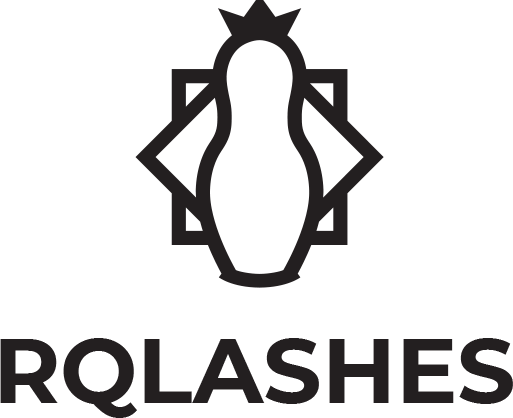Hypoallergenic adhesive: a fairy tale created by marketers or a real deal?

Lash adhesive is the biggest headache of every lash stylist. It is highly sensitive to storage conditions and sets strict requirements for its exploitation (temperature:19-21°C; air humidity: 50-80%). Did you know that, despite the fact of total security of procedure, around 1 girl out of 100 would get not only beautiful lashes but also nasty symptoms such as swelling, redness, itching, and so on? Let’s have a look at how to organize the procedure without any bad consequences for both client’s and stylist’s health.
What is the main reason for allergic reactions?
Despite their slight variances, all lash adhesives include cyanoacrylate (90-95% of the total composition). You may also see this substance in any household superglues. It is cyanoacrylate, or rather, its fumes, that are the most common cause of allergies after the lash extension procedure.
Despite their slight variances, all lash adhesives include cyanoacrylate (90-95% of the total composition). You may also see this substance in any household superglues. It is cyanoacrylate, or rather, its fumes, that are the most common cause of allergies after the lash extension procedure.
Hypoallergenic adhesive: myth or reality
There are lots of offers in the market that promote so-called “hypoallergenic glue”. According to the description it never causes any allergic reactions, and it is safe for both clients and for lash-makers. It would be great, but I should upset you. It’s a lie! All kinds of lash adhesives consist mainly of well-known cyanoacrylate. The only difference is the lower concentration in “hypoallergenic” ones. Although lower concentration of the allergen won’t protect against possible allergic reaction, it will influence badly on the adhesive’s setting time and on how long eyelash extension will last. To sum up, mysterious “hypoallergenic” adhesives may not only be a cause for allergic symptoms but also be a cause for low-quality service. The only thing you should try, if your client has an allergic reaction, is clear glue without black pigment, as sometimes graphite itself may be a reason for the reaction, not cyanoacrylate. Check our clear glue here.
There are lots of offers in the market that promote so-called “hypoallergenic glue”. According to the description it never causes any allergic reactions, and it is safe for both clients and for lash-makers. It would be great, but I should upset you. It’s a lie! All kinds of lash adhesives consist mainly of well-known cyanoacrylate. The only difference is the lower concentration in “hypoallergenic” ones. Although lower concentration of the allergen won’t protect against possible allergic reaction, it will influence badly on the adhesive’s setting time and on how long eyelash extension will last. To sum up, mysterious “hypoallergenic” adhesives may not only be a cause for allergic symptoms but also be a cause for low-quality service. The only thing you should try, if your client has an allergic reaction, is clear glue without black pigment, as sometimes graphite itself may be a reason for the reaction, not cyanoacrylate. Check our clear glue here.
Why is a lash stylist in danger?
Despite having no physical contact with adhesive, a lash artist is in even bigger danger than a client as she/he contacts with cyanoacrylate's fumes several times a day! We shouldn’t forget that even those people who naturally had no allergy to this chemical substance may eventually face it after a long time working with lash adhesive (due to so-called “cumulative impact”).
Despite having no physical contact with adhesive, a lash artist is in even bigger danger than a client as she/he contacts with cyanoacrylate's fumes several times a day! We shouldn’t forget that even those people who naturally had no allergy to this chemical substance may eventually face it after a long time working with lash adhesive (due to so-called “cumulative impact”).
What is the solution?
First of all, a lash stylist should minimize contact with adhesive’s fumes. I therefore kindly ask you not to use special glue rings as they provoke constant interaction with harmful fumes.
Next advice – using humidifiers and bactericidal lamps that protect personnel from potentially harmful airborne contaminants by effectively destroying airborne microbes.
The most effective (and the most expensive) way to protect a lash stylist from cyanoacrylate fumes is setting portable extractor hoods right above the workplace. The list price for these hoods begins at $200. But for this money, you’ll get nearly 100% guarantee of using lash adhesive without any bad consequences for your health.
However, if you are not financially prepared for buying an extractor hood, there is a cheap solution – a wet face mask. The cyanoacrylate group rapidly polymerize in the presence of water, so harmful fumes won’t be able to reach your respiratory system. Cheap and cheerful!
I hope that this article proved to be useful for you and I managed to open your eyes to many significant aspects of working with lash glue! Read more about the causes of allergy and the ways to prevent it here.
Stay healthy!
First of all, a lash stylist should minimize contact with adhesive’s fumes. I therefore kindly ask you not to use special glue rings as they provoke constant interaction with harmful fumes.
Next advice – using humidifiers and bactericidal lamps that protect personnel from potentially harmful airborne contaminants by effectively destroying airborne microbes.
The most effective (and the most expensive) way to protect a lash stylist from cyanoacrylate fumes is setting portable extractor hoods right above the workplace. The list price for these hoods begins at $200. But for this money, you’ll get nearly 100% guarantee of using lash adhesive without any bad consequences for your health.
However, if you are not financially prepared for buying an extractor hood, there is a cheap solution – a wet face mask. The cyanoacrylate group rapidly polymerize in the presence of water, so harmful fumes won’t be able to reach your respiratory system. Cheap and cheerful!
I hope that this article proved to be useful for you and I managed to open your eyes to many significant aspects of working with lash glue! Read more about the causes of allergy and the ways to prevent it here.
Stay healthy!
RQL Newsletter
Subscribe to our email newsletter for useful tips and special deals
By clicking this button, you agree to the Terms of Use and Privacy Policy.
YOU MAY BE INTERESTED IN

